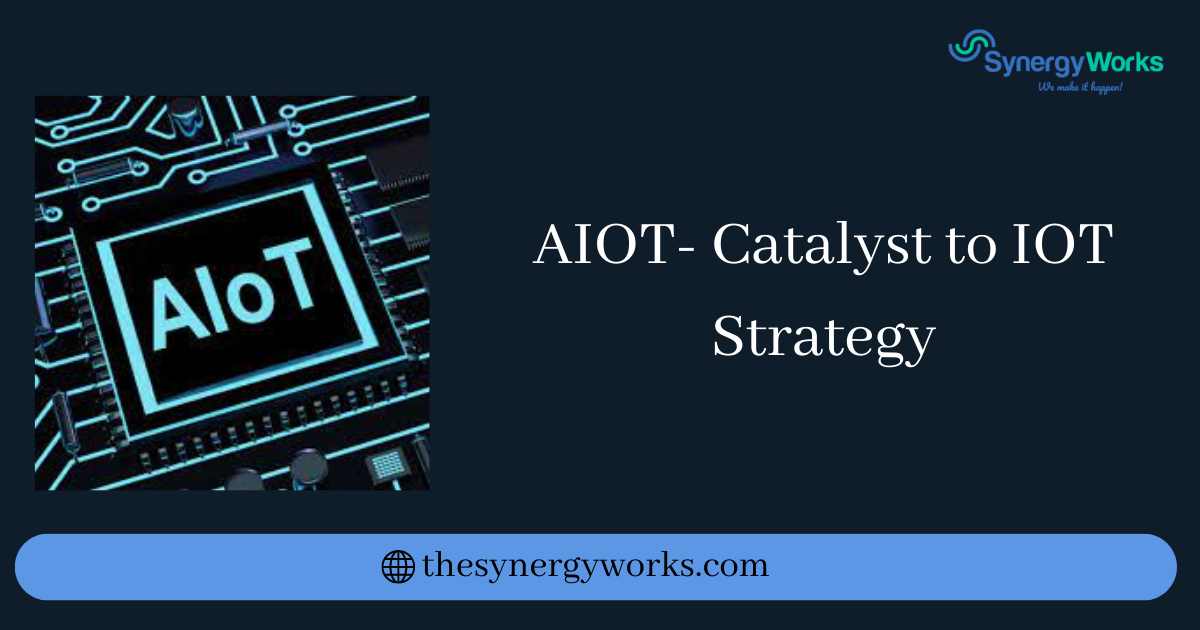Technological innovation has made things possible, which we used to dream about once. There is a dire need for competitive, innovative, pertinent-agile strategies for businesses to grow. IoT is playing a significant role in making our lives more comfortable, from smart homes to smart cities. We can analyze that with the abundant flow of data generation and streaming every year; however, the skill to handle data judiciously and effectively will determine whether the benefits of IoT are praiseworthy or not. The recent developments in artificial intelligence (AI) have brought prospects in overcoming IoT development tasks. Subsequently, AI and IoT technologies’ amalgamation becomes a hopeful trend to endorse the IoT ecosystem’s benign evolution.
The Need For AI And IoT
AIoT is a synthesis of AI and IoT in practical life applications. It implements AI and IoT by integrating extensive data with cloud computing using semiconductors devices, algorithm carriers, network security, and 5G technologies. The AIoT aims to apply intelligence to the edge and give devices the capability to comprehend the data, perceive the environment around them, and take the appropriate decision. IoT devices are not just envoys feeding data to the control center; however, integration with AI will enable applications to autonomously execute self-driven analytics. AIoT can generate unique opportunities to help the contemporary world through tailored services, customized content, upgraded accessibility and convenience, and profitable delivery.
Why has AIoT been labeled as a catalyst to IoT?
The IoT is the link of digital to physical. The connotation of AI to manage the sum of data produced from these abilities is becoming identical with IoT and is also identified as the Artificial Intelligence of Things (AIoT). The advantage that AIoT possesses can turn IoT data into new revenue streams, exciting business models, augmented operational surroundings, and outstanding customer experiences.
IoT is well-defined as a unified Physical Objects system, Devices, Actuators, Virtual Reality, Service Platforms, and networks with distinct identifiers and a capability to transfer data self-sufficiently. Practical examples of IoT applications can be precision agriculture, remote patient specialist care, and driverless cars.
IoT is the network of “things” that assembles and exchanges information from the environment. IoT can also occasionally be referred to as the driver of the fourth Industrial Revolution (Industry 4.0) by industry experts and has generated high-tech changes extended to various fields.
IoT developments bring exhilarating prospects to make lives calmer and enlighten producing businesses’ tivity and safety. AI is the engine or the “brain” that will empower analytics and decision making from the data collected together.
In other strategies, IoT is the messenger, and AI is the digital data hub’s processor. Collecting information is essential, but sorting, analyzing, and turning it into practical and useful knowledge is critical. That’s why it’s indispensable to develop quicker and more precise AIs to keep up with the utter volume of data being collected as IoT starts to teach in almost all aspects of our lives. The hour’s need is to get your work done, whether be it a minute task or a big project, effectively and efficiently without minimal human interference in real-time.
How AIOT affects business?
Intelligent decision making is one of the prime benefits of AIoT that will help manage the massive volume of incoming data, provide valuable insights, and make smarter decisions. For example, suppose the AIoT systems are implemented in a food processing company. In that case, the systems can predict failures and require maintenance in the present equipment and suggest modifications based on the requirements. This can be done by analyzing the AI-based algorithms and data collected from past references.
The next valuable addition can be increased through operational efficiency, which the AIoT systems can do through smart automation. By analyzing past performances, AIoT systems can do predictive analysis to determine the system’s actual demand to perform more efficiently. This can reduce the minimal variations in different factors of production.
AIoT can help systems predict operation outputs and inputs accurately, which can help to foresee the future course of action.
With the new developments in AIoT, businesses can also gain more customer delights and a unique customer experience. More in-depth customer intelligence can be achieved, which helps the industry create an agile and compelling customer experience strategy. Also, AIoT can help organizations to promote employee learning and personalization at the same time. You can focus on your stakeholders’ behavior, habits, patterns, and preferences precisely and aptly.
In a nutshell, AIoT shows no signs of slowing down. With Virtual Reality, Edge computing, AIoT will change how businesses think and operate. It will predict how much data our devices can store and process, and future advancements will be pushed in processing and learning boundaries. By applying AI’s analytical capabilities to data collected by IoT, organizations can recognize and understand patterns and make more conversant decisions. This leads to a diversity of profits for both consumers and companies, such as cheerful involvement, smart automation, and extremely bespoke practices. It also allows for better work integration and more comfortable system usage. With the enhanced penetration of AIoT into our lives, the future is bright.
Here You Can Read More About Mobile Application Development Company In USA
About Author
Shikha Taman
Shikha Taman is the founder & CEO of SynergyWorks Solutions. With over 12 years of experience in the industry. She has extensive knowledge of software engineering, project management, client management, and business strategy. She strives to ensure all the products developed are always up-to-date with materializing technologies to remain competitive in today’s marketplace.




